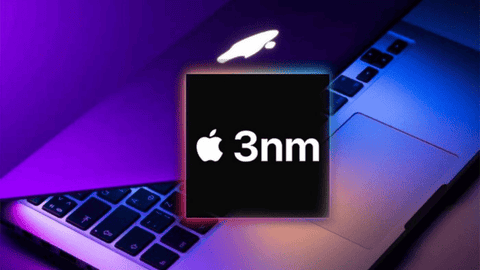According to early rumors about the Snapdragon 8 Gen3, It seems that Qualcomm will skip the 3nm architecture in 2024. A recent report that involves Apple confirms the reason. Taiwan today, states in the latest report, that Apple has about 90% of TSMC’s supply of 3nm chips for this year. These new chips will be used on future iPhones, MacBooks, and iPads.
Apple reportedly has more than 90% of TSMC 3nm production secured! Android players will need to fight for the other 10%
As per the rumors, Apple’s upcoming M3 series will use the 3nm architecture. The same goes for the Apple A16 Bionic coming later this year within the iPhone 15 Pro and Pro Max/Ultra. The next iPhones should give us the first taste of the 3nm architecture, as the Apple M3 and M3 Pro are reportedly delayed for early Q1 2024. Even though not all of Apple’s 3nm chips will be launched this year, the company has secured all the supply it needs for the near future. This leaves little room for competition, and that may explain why Qualcomm and MediaTek are reportedly sticking with the 4nm.
It is worth noting that both Qualcomm and MediaTek are expected to use TSMC’s latest 4nm architecture. The higher costs of 3nm tech may also influence these two companies’ decisions. With that in mind, Apple should be the sole company to land in the 3nm territory in 2023. By 2024, we may also see updated MacBooks and iMacs featuring any of the 3nm-based Apple M3 series variations.
Considering the report, Qualcomm, MediaTek, and even Samsung may need to “fight” for the remaining 10% of TSMC’s capacity. Of Course, we still have several months until the end of the year. TSMC can increase its capacity, and offer a different prospect by the end of the year. Furthermore, there are rumors suggesting that most Android makers will stick with 4nm for another year. So we will have to wait for more details.
The benefits of the jump to the 3nm process
The 3nm architecture is reported to offer a 35% increase in power efficiency. When it comes to performance, we will see a 15% boost in performance, taking the A16 Bionic chip in the iPhone 14 Pro and Pro Max. The report states that TSMC is on track to scale the production of Apple’s A17 and M3 processors with its N3 tech. The Apple A17 Bionic is expected to undergo 82 mask layers, with a likely die size ranging from 100mm to 110mm square.
According to TSMC, the 3nm has the most advanced foundry tech in both PPA and transistor technology. The N3 tech will offer up to 70% logic density gain, up to 15% speed improvement at the same power, and 30% power reduction when compared to the N5 (5nm) tech.
Qualcomm, MediaTek, Intel and others will wait for the N3E architecture
The initial reports on the N3 process state that the yield could be as high as 80%. TSMC has plans to move to a more advanced 3nm tech, the N3E, in the second half of 2023. We may see players like Qualcomm and MediaTek skipping the first N3 for the N3E.
The N3 process is highly complex, utilizing a 24-layer multi-pattern extreme ultraviolet (EUV) lithography. It is denser and offers higher logic density. On the other hand, N3E, which uses a simpler 19-layer single-pattern tech, is easier to produce and less expensive. It also uses less power and clock higher when we look at the N3 process. TSMC’s CEO C.C. Wei expects the 3nm manufacturing process to be worth more than $1.5 trillion business within five years of vol. production. The N3 wafers cost around $20,000 compared to $16,000 for TSMC’s 5nm node called N5. That may explain why the competition will likely sit and wait for the N3E.
Will Apple have some major advantages being the first with 3nm chips?
Take in mind that this is an opinion-based paragraph. Apple will be the first player to ship smartphones with 3nm chips, which means a lot in marketing terms, and the iPhone 15 Pro series may bring some major performance leaps and efficiency compared to other players in the segment. We still need to see actual real-world tests of the first 3nm chips, but if they prove to be a massive leap over the 4nm standard, then some Android users could be tempted to migrate to Apple’s devices.
When it comes to the Apple M3 series, the use of 3nm chip may be even more significant. Apple will be on the third generation of its ARM-based chips for computers. The Cupertino-based firm is basically revolutionizing the computer segment with devices that perform as well as regular PCs. While competition struggles to dive into the ARM segment, Apple will be consolidating its chipset division with a new generational leap, which should bring more benefits and increase the appeal of its MacBooks and iMacs.
